Electric circuits miscellaneous
- For the network shown in the given figure, voltage VB will be
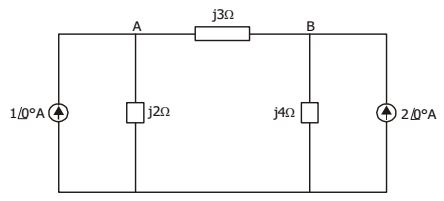
-
View Hint View Answer Discuss in Forum
Drawing equivalent circuit, we have
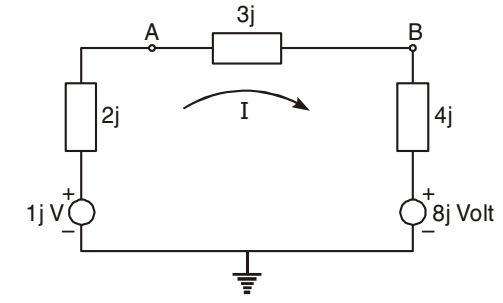
Current , I = 8j - 2j = 
- 2 
amp 9j 3
Then, VB = 8j + 4j.I= 8j - 8j 3 = 16j = 5.33j V 3
Correct Option: A
Drawing equivalent circuit, we have

Current , I = 8j - 2j = 
- 2 
amp 9j 3
Then, VB = 8j + 4j.I= 8j - 8j 3 = 16j = 5.33j V 3
- In the network shown in the given figure, which of the following equations would represent the equation for loop 3?
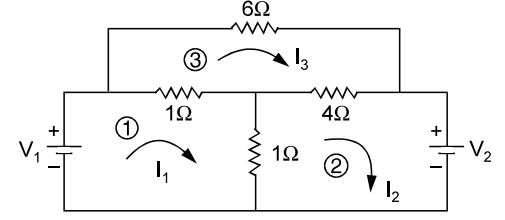
-
View Hint View Answer Discuss in Forum
Loop equation is
(I 3 – I1) 1 + 6 I3 + (I3 – I2). 4 = 0
∴ – I1 – 4 I2 + 11 I3 = 0Correct Option: C
Loop equation is
(I 3 – I1) 1 + 6 I3 + (I3 – I2). 4 = 0
∴ – I1 – 4 I2 + 11 I3 = 0
- Thevenin equivalent of the network shown in Fig. (a) is 10 V in series with a resistance of 2 Ω. If a resistance of 3 Ω is connected across AB as shown in Fig. (b), then Thevenin equivalent of the modified network across AB will be
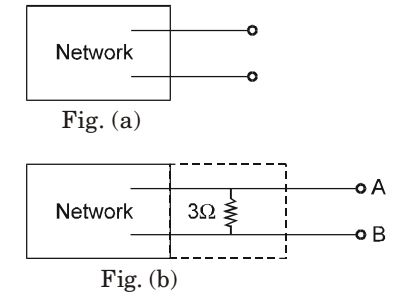
-
View Hint View Answer Discuss in Forum
Req = 2 × 3 = 1.2 Ω 2 + 3 Voc = 10 × 3 = 6 V 3 + 2 Correct Option: B
Req = 2 × 3 = 1.2 Ω 2 + 3 Voc = 10 × 3 = 6 V 3 + 2
- Norton’s equivalent of circuit shown in Fig.(a) is drawn in the circuit shown in Fig.(b). The values of ISC and Req in Fig.(b) are respectively
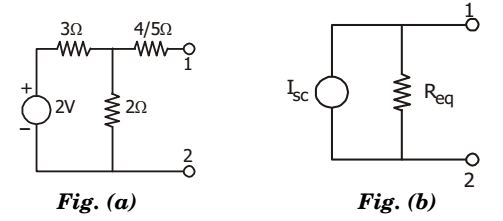
-
View Hint View Answer Discuss in Forum
NA
Correct Option: D
NA
- The state equation for the current I1 shown in the network given below in terms of the voltage Vx and the independent source V, is given by
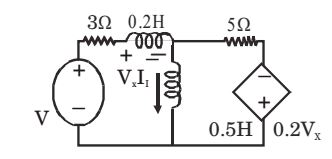
-
View Hint View Answer Discuss in Forum
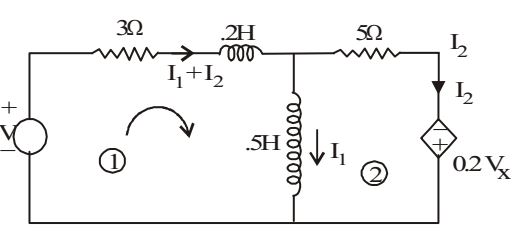
Using KVL in loop (1), we getV = 3(I1 + I2) + Vx + 0.5 dI1 ........(1) dt
and using KVL in loop (2), we haveand 0.5 dI1 = 5I2 - 0.2Vx .......(2) dt
Solving (1) and (2),dI1 = 5 V - 15 I1 - 1.4Vx dt 4 4
Correct Option: A

Using KVL in loop (1), we getV = 3(I1 + I2) + Vx + 0.5 dI1 ........(1) dt
and using KVL in loop (2), we haveand 0.5 dI1 = 5I2 - 0.2Vx .......(2) dt
Solving (1) and (2),dI1 = 5 V - 15 I1 - 1.4Vx dt 4 4

